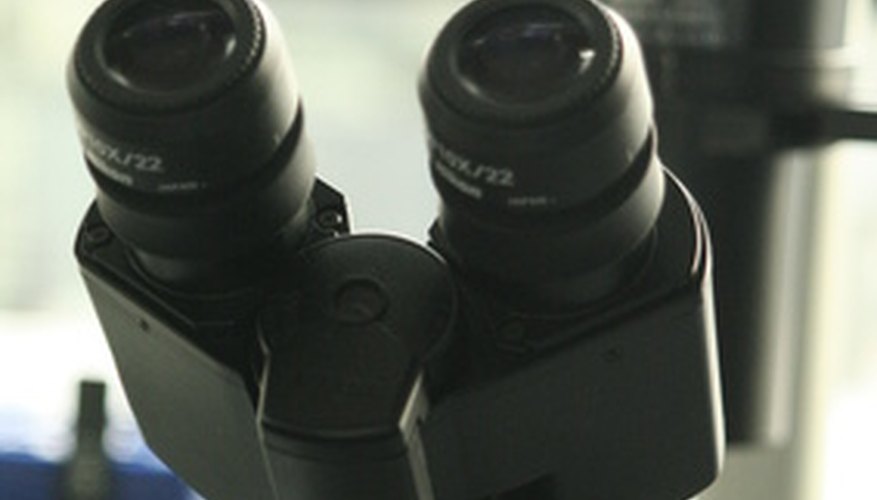When studying a specimen with a light microscope, the eye peers into the top of the microscope. The specimen rests on a rectangular glass slide below. Lenses in the microscope magnify the specimen. Light is vitally important for microscopic examination, and most microscopes provide and regulate this vital element.
Light and Condenser
In a light microscope the light source lies beneath the glass slide containing the specimen to be studied. A condenser occupies the area between the light source and the slide. The condenser focuses the light on the specimen.
Rheostat
Most laboratory microscopes have a rheostat that regulates light intensity. A little disk--the dimmer switch--controls the rheostat and is rotated to the right or to the left until a satisfactory amount of light illuminates the specimen.
Rheostat Principle
In an electrical circuit, electrical current will decrease if resistance to current flow increases. The rheostat is a device that varies the resistance in a circuit without interrupting the flow of the current in the circuit. When the rheostat of the microscope increases the resistance, less current flows, and a dimmer light will strike the specimen. If the rheostat decreases the resistance, more current flows, and more light hits the specimen.
- In an electrical circuit, electrical current will decrease if resistance to current flow increases.
- When the rheostat of the microscope increases the resistance, less current flows, and a dimmer light will strike the specimen.
